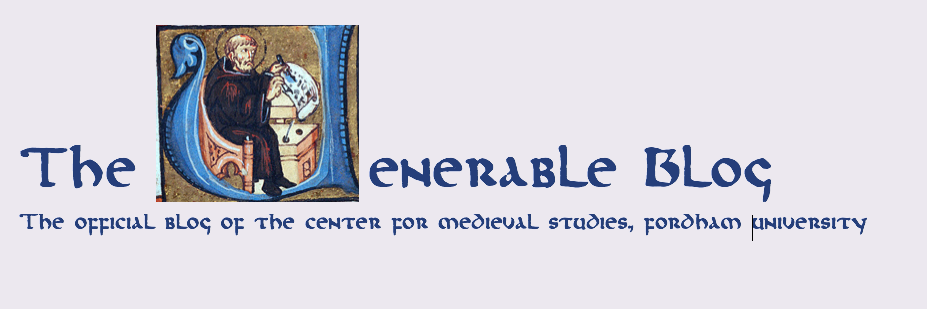 On September 30th, Katherine Briant of Fordham’s Center for Medieval Studies curated a viewing of medieval manuscripts and early printed books in the Mertz Library’s Rare Book and Folio Room as part of the first day of this year’s Biduum Latinum, which was hosted by the New York Botanical Garden. Consisting of thirteen books of botany and medicine that span the late 12th to mid-16th centuries, Katherine’s exhibit presented examples of some of the most influential scientific texts of the Middle Ages in forms and copies ranging from the startlingly beautiful to the equally startlingly practical.
On September 30th, Katherine Briant of Fordham’s Center for Medieval Studies curated a viewing of medieval manuscripts and early printed books in the Mertz Library’s Rare Book and Folio Room as part of the first day of this year’s Biduum Latinum, which was hosted by the New York Botanical Garden. Consisting of thirteen books of botany and medicine that span the late 12th to mid-16th centuries, Katherine’s exhibit presented examples of some of the most influential scientific texts of the Middle Ages in forms and copies ranging from the startlingly beautiful to the equally startlingly practical.

Two Circa Instans copies were displayed, one from the late 12th century (QK 99 .P575 1190) and the other from the last quarter of the 13th century (QK 99 .P575 1275). The former, much more practical in its appearance and having been well-used, contrasted with the latter copy, which was obviously meant to be admired beyond the contents of its leaves.

The contrast gave the exhibit’s audience a more complete understanding of the space these texts inhabited in medieval intellectual culture and manuscript culture. While of a more practical nature than many other kinds of texts, medical and botanical books were still decorated, showing the simultaneous importance of both the knowledge that the book was meant to transmit and the presentation of that knowledge on the manuscript page.

Also of note were two other works Katherine presented and described. The first, a medical compilation from 13th-century France (R128 .C65), shows the ways in which recorded medical knowledge was expanded and commented upon by readers who added ample notes and marginalia over time to the text. Another text, a 1565 Venice edition of Mattioli’s Commentarii, was paired with an original woodblock used to create the illustration of Eruca Sativa (Rocket) for that plant’s entry in the book. The audience had the chance to compare the image produced in the text with the mirror image carved into the woodblock, imagining the action of pressing the inked block into the page and visualizing the physicality that early modern book production entailed.

This book viewing was a wonderful way to end the first day of the Biduum Latinum, and it provided participants with the opportunity to see the material objects that transmitted the botanical knowledge featured in the bootcamp’s second day. The Center would like to congratulate Katherine on her successful exhibition and would like to extend a grateful thanks to the New York Botanical Gardens for their warm welcome.
